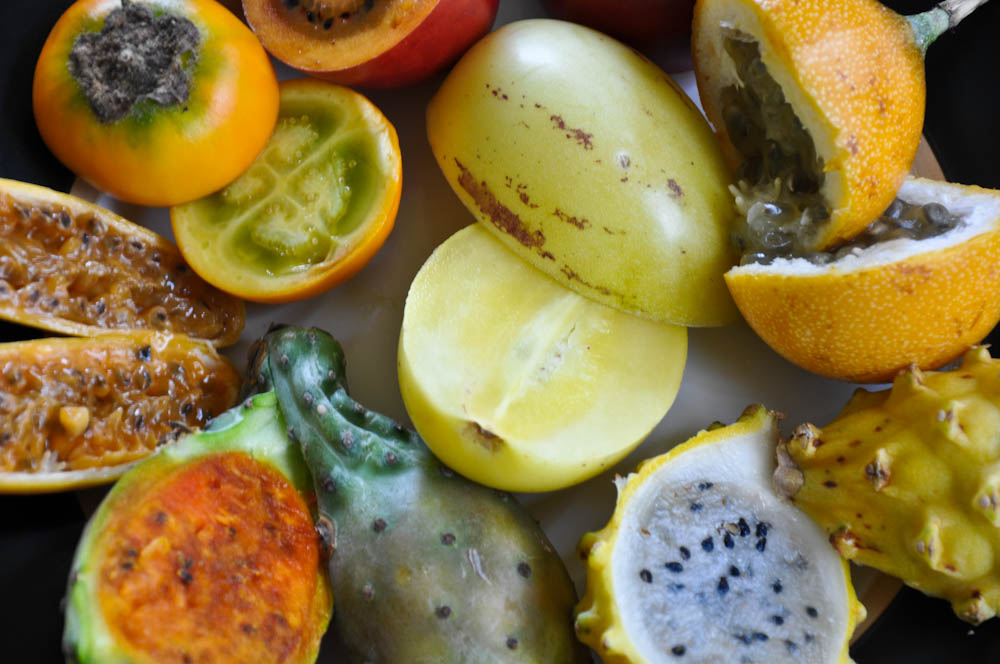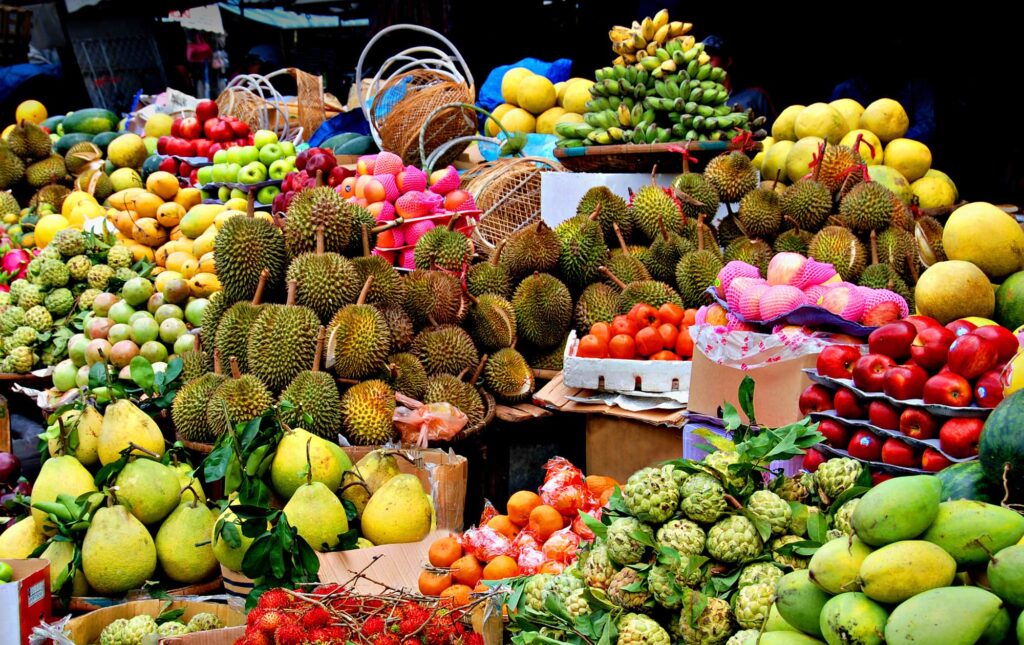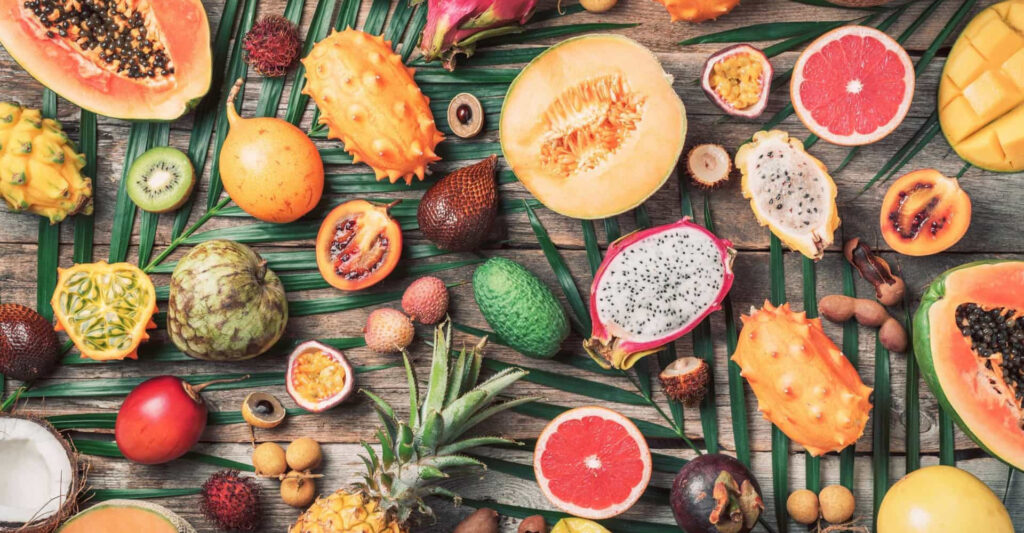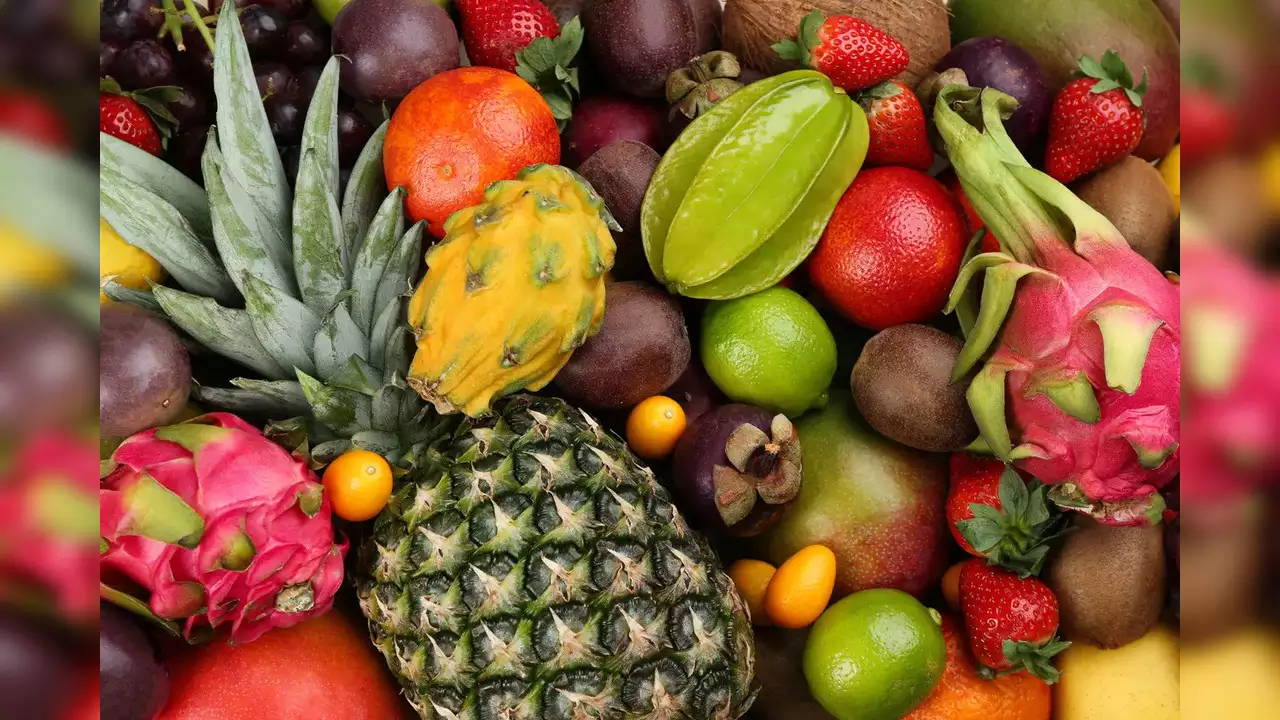Embarking on a global tour of exotic fruits and vegetables unveils a kaleidoscope of colors, textures, and flavors, reflecting the unique ecosystems and agricultural practices across continents. In the desire for a unique experience of exotic fruits, those flavors often extend into smoking accessories, even as best-selling products. From the bustling markets of Southeast Asia to the sprawling fields of South America, this culinary journey promises a sensory adventure that goes beyond the ordinary. Each exotic produce not only titillates the taste buds but also carries with it a cultural narrative, making the exploration of global flora a truly enriching experience.
Tropical Delights: A Taste of the Equator

In the lush expanses of tropical regions, the diversity of exotic fruits is nothing short of astounding. The Amazon Rainforest, often referred to as the “lungs of the Earth,” is not only a biodiversity hotspot but also a treasure trove of unique fruits. Consider the açaí berry, a small, dark purple fruit celebrated for its antioxidant-rich properties. Transcending its local roots, the açaí bowl has become a global health trend, showcasing the global impact of tropical treasures.
Moving east to Southeast Asia, the dragon fruit takes center stage with its vibrant pink or yellow skin and speckled flesh. Rich in vitamin C and fiber, this visually stunning fruit adds a refreshing note to both sweet and savory dishes. The health clinic in Marietta GA says that this delicious fruit full of antioxidants is suitable for everyday fruit smoothies that will almost certainly keep the body away from colds. As we delve deeper into the tropical landscape, the mangosteen emerges—a fruit hailed as the “queen of fruits” for its sweet and tangy flavor. Its arrival heralds the beginning of the mangosteen season, a much-anticipated event in many Southeast Asian countries.
Across continents, tropical delights capture the essence of equatorial regions, not just in their flavors but in the stories woven into the fabric of local cultures.
Temperate Treasures: From Europe to North America
Transitioning to temperate climates, we find a different yet equally captivating array of exotic produce. Europe, with its rich agricultural history, boasts the quince—a fragrant fruit with a subtle sweetness. Often used in jams and desserts, the quince adds a touch of sophistication to culinary creations. Journeying westward, we encounter the blueberry, a North American native celebrated for its antioxidant properties and versatile use in both sweet and savory dishes.
In the heart of Europe, the white asparagus takes the spotlight during springtime. Prized for its delicate flavor and tender texture, white asparagus holds a revered place in European gastronomy. Tourists can rent a car in Beograd and drive to European capitals with world-class restaurants that serve dishes with asparagus. Meanwhile, North America contributes the pawpaw, a tropical-flavored fruit indigenous to the continent. Despite its limited availability, the pawpaw has a dedicated fan base that appreciates its custard-like texture and complex flavor profile.
Temperate treasures not only showcase the adaptability of plants to diverse climates but also highlight the cultural significance attached to these unique fruits and vegetables.
Desert Wonders: Savoring the Flavors of Arid Landscapes
Delving into the arid landscapes of the Middle East and North Africa reveals a surprising abundance of exotic fruits and vegetables uniquely adapted to survive in challenging environments. The date palm, a symbol of resilience, stands tall in these regions, providing not only sustenance but also a source of income for many communities. The versatility of dates is showcased in both sweet and savory dishes, emphasizing their integral role in local cuisines.
Heading south to South Africa, the marula fruit emerges as a testament to nature’s ingenuity. Used in the production of the famous Amarula liqueur, the marula fruit adds a sweet and nutty flavor to the beverage. Beyond its culinary applications, the marula tree holds cultural significance, with various African communities attributing spiritual and medicinal properties to its fruits. Special kitchen appliances are used to prepare delicate marula cocktails, and if you have an appliance that doesn’t work for you, appliance repair service in Washington DC will bring it back to life.
In the heart of desert wonders, the culinary landscape is a testament to human adaptation, utilizing the unique attributes of arid landscapes to cultivate and savor these exceptional fruits.
Asia’s Vegetable Haven: Exploring Unique Varieties

Asia, with its vast and varied landscapes, offers an impressive array of unique vegetables that have become staples in regional cuisines. The lotus root, a popular ingredient in East Asian dishes, exemplifies the delicate balance between crispness and tenderness. Used in soups, stir-fries, and salads, the lotus root is not only versatile but also packed with essential nutrients.
Venturing into the Indian subcontinent, the taro root takes center stage, contributing its starchy richness to a multitude of dishes. Whether boiled, fried, or mashed, taro is a culinary canvas for creative exploration. Further east, the water spinach, or kangkung, is a beloved vegetable in Southeast Asian cuisine. Its tender shoots and leaves add a subtle crunch to dishes and are often stir-fried with garlic and chili for a flavorful side. The secret of serving this delicious dish is studied in hospitality courses in the East.
Traversing the vast continent of Asia, the diverse vegetables showcase the ingenuity of agricultural practices and the ability to harness nature’s bounty for both sustenance and culinary delight. Each unique variety tells a story of cultural heritage and the artistry of culinary traditions.
From the Andes to the Himalayas: Mountain Bounty
Venturing to high-altitude regions, we discover a bounty of exotic produce thriving in mountainous terrain. Mortgage companies in Raleigh NC state that cottage properties at these elevations are becoming more expensive due to people’s desire to return to nature and a healthy lifestyle. In the Andes, the oca root takes center stage—a tuber with a spectrum of colors and flavors, ranging from sweet to tangy. Considered a staple in Peruvian cuisine, the oca has recently gained attention globally for its adaptability to diverse climates and its potential as a resilient crop in the face of climate change.
Climbing further to the Himalayas, the yak butter tree, or zhi butter tree, captures attention with its unique contribution to both cuisine and traditional medicine. The fruit, resembling a small, wrinkled apple, produces a rich, flavorful butter used in Tibetan dishes. Beyond its culinary use, the zhi butter tree holds spiritual significance, playing a role in religious rituals and festivals.
As we ascend to new heights, the mountain bounty showcases the resilience of agriculture in challenging environments, emphasizing the resourcefulness of communities to cultivate and celebrate unique produce.
Island Paradises: Coastal Culinary Wonders
Transitioning to coastal regions, we encounter a plethora of exotic fruits and vegetables shaped by the influence of sea breezes and coastal climates. In the Caribbean, the breadfruit takes the spotlight—a starchy, versatile fruit with a texture akin to freshly baked bread. Recognized for its sustainability and ability to thrive in tropical coastal environments, the breadfruit holds promise as a source of food security in various island nations. An internet service provider that manages IT services in San Antonio offers uninterrupted internet with which you can find tons of culinary recipes with this delicious fruit.
Heading east to the Pacific Islands, the pandan leaf becomes a culinary muse, infusing dishes with its fragrant, vanilla-like aroma. Widely used in Southeast Asian and Pacific Island cuisines, the pandan leaf not only imparts a distinctive flavor but also serves as a natural food coloring. Embraced for its versatility, pandan has found its way into both sweet and savory dishes, contributing to the rich culinary tapestry of island paradises. Through Google ads, people are increasingly encountering these exotic plants, and if your Google ads are suspended, contact a professional to solve the problem.
Coastal culinary wonders celebrate the synergy between land and sea, offering a glimpse into the innovative ways communities harness the bounty of coastal ecosystems for nourishment and culinary delight.
Mystical Orchards: Unveiling Rare Varieties
As we navigate our way through this global tour, we stumble upon mystical orchards harboring rare and elusive varieties that captivate the imagination. In the heart of Japan, the yuzu fruit emerges as a citrus sensation with a fragrant, zesty flavor. Beyond its culinary applications, the yuzu holds cultural significance in traditional ceremonies and is revered for its aromatic essential oils. Through a Readathon school fundraiser, students can learn new things and earn pocket money by reading about these traditions.
Traveling to the Mediterranean, we encounter the medlar—a fruit that, when ripe, resembles a miniature apple with a unique floral taste. Often enjoyed after the first frost, the medlar is an exemplar of patience and anticipation in the orchard, requiring time to transform from astringent to sweet and palatable.
Mystical orchards, with their rare and enigmatic offerings, remind us that culinary exploration is not only about taste but also about the sense of wonder and discovery that accompanies each encounter with the extraordinary.
Urban Oasis: Cultivating Exotics in Cityscapes
Shifting our focus to urban landscapes, we explore how cities around the world are cultivating exotic fruits and vegetables within the confines of concrete jungles. Rooftop gardens and vertical farming initiatives have given rise to a new era of urban agriculture, bringing a touch of green to the skyline and diversifying the culinary offerings in bustling metropolises. Houses in Boca Falls with their green roofs and wide yards offer great opportunities for this way of growing fruit.
In New York City, for example, the Brooklyn Grange rooftop farm has become a beacon of sustainability, cultivating a variety of crops, including heirloom tomatoes, kale, and unique herbs. This urban oasis not only provides fresh produce to city dwellers but also serves as an educational hub, reconnecting urbanites with the origins of their food.
Heading across the globe to Tokyo, innovative vertical farms like Pasona O2 showcase the integration of agriculture into corporate spaces. Employees at Pasona O2 can enjoy a lunch made with produce grown within the office building, fostering a deeper connection to the food they consume and the environment. With the help of the best web hosting, these companies have enticing websites where they explain the concept and beauty of this life.
Urban oasis initiatives demonstrate the resilience of agriculture in unexpected spaces, challenging preconceived notions and inspiring a reimagining of the relationship between city life and the cultivation of exotic produce.
Global Fusion: Culinary Crossroads and Fusion Delights

In our final leg of this global tour, we arrive at the culinary crossroads where flavors blend, and traditions converge to give rise to fusion delights that transcend borders. The fusion of culinary traditions not only reflects the interconnectedness of our world but also highlights the endless possibilities when diverse ingredients come together on the plate. Along with such exotic tastes comes cheerful music that brings the sounds of the world and which is of the highest quality in record format, you can even sell vinyl records and get cash for them.
Consider the mango and chili-infused salsa, a marriage of tropical sweetness and spicy heat that transcends cultural boundaries. Originating from the fusion of Latin American and Southeast Asian flavors, this condiment has become a global sensation, gracing tables from street vendors to fine-dining establishments.
Continuing our journey, we encounter the sushi burrito—a fusion masterpiece that merges the techniques of Japanese sushi with the convenience and portability of a burrito. This innovative dish, originating in the United States, exemplifies the dynamic nature of culinary evolution, where traditional boundaries are playfully crossed. With the help of good M&A business advisors, restaurants serving this delicious dish are springing up at every turn.
As we celebrate the global fusion of flavors, we recognize that the culinary world is a canvas where chefs and home cooks alike can experiment, creating new and exciting combinations that pay homage to the rich diversity of produce available around the world.
Conclusion
In conclusion, our extended exploration of exotic fruits and vegetables has traversed continents, climbed mountains, embraced coastal paradises, reveled in mystical orchards, celebrated urban oases, and indulged in the delightful fusion of culinary traditions. This global tour has been a testament to the extraordinary diversity that Mother Nature offers and the ingenuity of communities worldwide to cultivate, celebrate, and innovate with the bounty of the earth.
As we reflect on this culinary odyssey, we are reminded that the world’s produce is not just sustenance; it is a rich tapestry woven with stories, traditions, and the resilience of both nature and humanity. Each exotic fruit and vegetable carries with it a unique history, a cultural narrative, and a place in the hearts and palates of those who cultivate and consume them.
The global fusion of flavors showcased the dynamic evolution of culinary traditions, demonstrating that innovation knows no bounds. In urban landscapes, we witnessed the transformation of concrete jungles into fertile grounds for cultivating exotic delights, fostering a deeper connection between city dwellers and the origins of their food.
